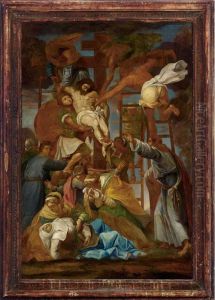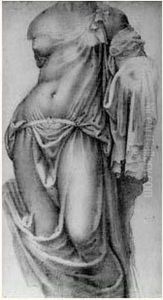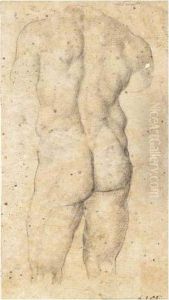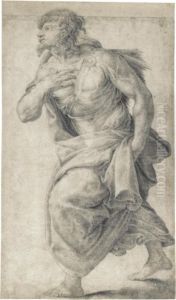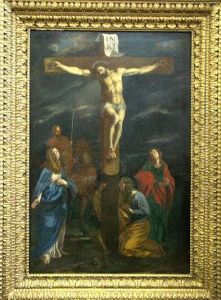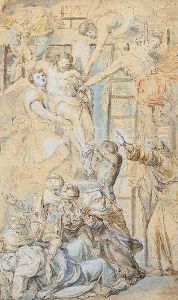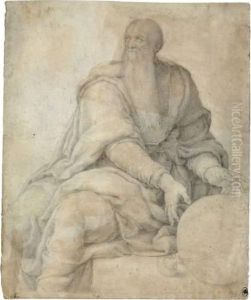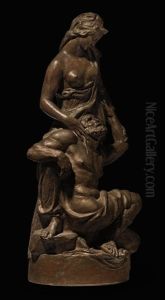Daniele Volterra Da Ricciarelli Paintings
Daniele Ricciarelli, known as Daniele da Volterra, was an Italian mannerist painter and sculptor of the Renaissance period, born in Volterra in Tuscany in 1509. He is perhaps best known for his association with Michelangelo and for the task of painting draperies over some of the nudes in the latter's Last Judgment (1536–1541) in the Sistine Chapel, which earned him the nickname 'Il Braghettone' (meaning 'the breeches maker').
Daniele was initially trained in Rome, where he was influenced by the works of Raphael and the Roman school. However, his style was profoundly impacted by Michelangelo, whom he may have met through his first patron, Cardinal Giovanni de' Medici. After the Cardinal's death, Daniele entered the service of the Medici family in Florence, which further solidified his artistic direction.
His own works were characterized by their robust figures and strong use of chiaroscuro, demonstrating the mannerist preoccupation with the manipulation of space and form. Among his most notable works is the 'Descent from the Cross' (c. 1545) in the church of Trinità dei Monti in Rome, which showcases his mastery of anatomy and composition, clearly reflecting the influence of Michelangelo.
Although Daniele enjoyed a certain level of success during his lifetime, his legacy has been somewhat overshadowed by his association with the controversial 'overpainting' of the Sistine Chapel's frescoes. After Michelangelo's death, the Counter-Reformation Church deemed the nudes in the Last Judgment inappropriate, and Daniele was commissioned to make them conform to the new decorum. Despite this task, which was considered an act of vandalism by later generations, he was a respected artist in his own right.
Daniele da Volterra's career also included a brief period as an architect and he was an accomplished sculptor, but it was his painting that left the most significant mark on the Italian Renaissance. His work represents the transition from the High Renaissance to Mannerism, and his legacy is that of an artist who navigated the changing tides of religious and artistic sensibilities of his time.
Daniele da Volterra died in Rome in 1566, and his reputation as an artist has been reassessed over time. Today, art historians recognize his contributions to the Mannerist style and his skillful execution of complex compositions. His works are held in various museums and collections around the world, attesting to the enduring interest in his artistic output.
